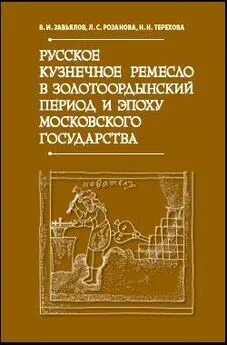Владимир Завьялов - Русское кузнечное ремесло в золотоордынский период и эпоху Московского государства
- Название:Русское кузнечное ремесло в золотоордынский период и эпоху Московского государства
- Автор:
- Жанр:
- Издательство:неизвестно
- Год:неизвестен
- ISBN:нет данных
- Рейтинг:
- Избранное:Добавить в избранное
-
Отзывы:
-
Ваша оценка:
Владимир Завьялов - Русское кузнечное ремесло в золотоордынский период и эпоху Московского государства краткое содержание
Для археологов, историков, этнографов.
Русское кузнечное ремесло в золотоордынский период и эпоху Московского государства - читать онлайн бесплатно ознакомительный отрывок
Интервал:
Закладка:
Розанова 1990 — Розанова Л. С. Своеобразие технологии кузнечного производства Южной и Северной Руси в домонгольский период // Проблемы археологии Южной Руси. Киев, 1990.
Розанова 1997 — Розанова Л. С. К вопросу о технологии изготовления железных изделий в средневековом Пскове (по материалам Довмонтова города) // Памятники старины. Концепции. Открытия. Версии. Т. II. СПб.; Псков, 1997.
Розанова 1998 — Розанова Л. С. Результаты металлографического исследования железных изделий из Изборской крепости // Артемьев А. Р. Города Псковской земли XIII–XV вв. Владивосток, 1998.
Розанова, Терехова 1997 — Розанова Л. С., Терехова Н. Н. От железной крицы до готового изделия (опыты физического моделирования) // Терехова Н. Н., Розанова Л. С., Завьялов В. И., Толмачева М. М . Очерки по истории древней железообработки в Восточной Европе. М., 1997.
Розанова, Терехова 2001 — Розанова Л. С., Терехова Н. Н. Производственные традиции в кузнечном ремесле Твери // Тверской кремль: комплексное археологическое источниковедение. СПб., 2001.
Розанова, Терехова 2004 — Розанова Л. С., Терехова Н. Н. Ножи из русских и западноевропейских мастерских // Археология Подмосковья. Материалы науч. семинара. М., 2004.
Розанова, Терехова 2005 — Розанова Л. С., Терехова Н. Н. Кузнечное ремесло на сельских поселениях Подмосковья (по материалам селища Мякинино-1) // Археология Подмосковья. Материалы науч. семинара. Вып. 2. М., 2005.
Розенфельдт 1971 — Розенфельдт Р. Л. Инструменты московских ремесленников // Древности Московского Кремля. МИА. № 167. М., 1971.
Русь в XIII веке 2000 — Русь в XIII веке: континуитет или разрыв традиций? Тез. докл. междунар. науч. конф. М., 2000.
Русь в XIII веке 2003 — Русь в XIII веке. Древности темного времени. М., 2003.
Рыбаков 1948 — Рыбаков Б. А. Ремесло древней Руси. М.; Л., 1948.
Сванидзе 1964 — Сванидзе А. А. Некоторые вопросы истории цехового строя Стокгольма (конец XIV–XV вв.). М., 1964.
Сербина 1978 — Сербина К. Н. Крестьянская железоделательная промышленность Центральной России XVI — первой половины XIX вв. Л., 1978.
Соловьев 1988 — Соловьев С. М. Сочинения: В 18 кн. Кн. 5. М., 1988.
Стоскова 1962 — Стоскова Н. Н. Первые металлургические заводы России. М., 1962.
Сытин 2000 — Сытин П. В. Из истории московских улиц. М., 2000.
Тверской кремль 2001 — Тверской кремль: комплексное археологическое источниковедение. СПб., 2001.
Терехова 1985 — Терехова Н. Н. Железообработка в древнемонгольских городах // СА. № 3. 1985.
Терехова, Розанова, Завьялов, Толмачева 1997 — Терехова Н. Н., Розанова Л. С., Завьялов В. И., Толмачева М. М. Очерки по истории древней железообработки в Восточной Европе. М., 1997.
Терехова, Розанова 2004 — Терехова Н. Н., Розанова Л. С. Технология производства кузнечных изделий // Средневековое поселение Настасьино. Тр. Подмосковной экспедиции Ин-та археологии РАН. Т. 2. М., 2004.
Толмачева 1983 — Толмачева М. М. Технология кузнечного ремесла Старой Рязани // СА. № 1. 1983.
Устюжский летописный свод 1949 — М.; Л., 1949.
Фальковский 1950 — Фальковский Н. И. Москва в истории техники. М., 1950.
Фехнер 1956 — Фехнер М. В. Торговля Русского государства со странами Востока в XVI в. М., 1956.
Хомутова 1973 — Хомутова Л. С. Техника кузнечного ремесла в древнерусском городе Серенске (вторая половина XII–XIV в.) // СА. № 2. 1973.
Хомутова 1978 — Хомутова Л. С. Результаты микроструктурного исследования кузнечных изделий // Седова М. В . Ярополч Залесский. М., 1978.
Черноусов и др. 2006 — Черноусов П. И., Мапельман В. М., Голубев О. В. Металлургия железа в истории цивилизации. М., 2006.
Энговатова 2004 — Энговатова А. В. Введение // Средневековое поселение Настасьино. Тр. Подмосковной экспедиции Ин-та археологии РАН. Т. 2. М., 2004.
Энговатова, Коваль 2004 — Энговатова А. В., Коваль В. Ю. Отчет об охранных археологических раскопках на селище Мякинино-1 и разведках в Красногорском районе Московской области в 2003 году // Архив ИА РАН. 2004
Юшко 2005 — Юшко А. А . Звенигород Московский и удел звенигородских князей. М., 2005.
Юшко, Хомутова 1981 — Юшко А. А., Хомутова Л. С. Ножи из раскопок Звенигорода Московского // КСИА. Вып. 164. 1981.
Gurin 2000 — Gurin M. F. Evolution of iron implements in Belarus // Acta Metallurgica Slovaca. Ko?ice, 2000.
Knives and scabbards 1987 — Medieval finds from excavations in London. London, 1987.
Mazur, Nosek 1972 — Mazur A., Nosek E. Wczesnesredniowieczne no?e dziwerowane z Wroc?awa // Kwartalnik historii nauki i techniki. R. XVII. № 2. Warszawa, 1972.
Piaskowski 1960 — Piaskowski J. Technika Gdanskiego hutnictwa i kowalstwa zelaznego X–XIV w. na podstawie badan metaloznawczych. Gdansk, 1960.
Pleiner 1962 — Pleiner R. Stare evropske kovarstvi. Praha, 1962.
Pleiner 1979a — Pleiner R. Die Technik und Schmiedehandwerke in
13. Jahrhundert im Dorf und in der Stadt // Geschichtswissenschaft und Arhaeologie. XXII. Sigmaringen, 1979. Pleiner 1979b — Pleiner R. K v?voji slovansk? no?i?sk? techniky v?ech?ch // Archeologicke rozhledy, 3. Praha, 1979.
Pleiner 1993 — Pleiner R. Punch marks on high medieval iron artefacts // Bloomery ironmaking during 2000 years. Vol. 3. Trondheim, 1993.
Zavjalov 1992 — Zavjalov V. I. The Pomor’s Knives (According to Artifacts from Excavations on Spitzbergen) // Specimina Sibirica.
T. 5. The Arctic. Papers of an International Conference. Savariae, 1992.
V. I. Zavyalov, L. S. Rozanova, N. N. Terekhova. Russian blacksmith’s craft in the golden horde period and in the epoch of Muscovite state
Summary
This book considers a series of problems related to the history of the blacksmith’s craft in Russia within a wide chronological span — from the time of establishment of the Mongol dominion until the formation of the Russian centralized state. Conditionally speaking, the discussed period may be divided into two stages: the first one marked by the existence of the Golden Horde, that is, from the second part of the 13th to the late 15thcc., and the second one related to the epoch of the Muscovite state (the 16th— 17th cc.). From the historical standpoint the first stage is characterized by the disunity of Russian lands and parallel development of the trends toward their consolidation, struggle for national independence, which led to gradual formation of the united Russian state with Moscow as its centre. The second stage is marked by the maintenance of centralised power, formation of the all-Russian market, when new territories joined up the indigenous Russian lands and Muscovite Russia appeared in the international political scene as a new state.
The blacksmith’s craft may be rightly regarded as a base for the growth of Russia’s economic culture. To a great extent it was this branch of economy that contributed considerably to the rise of the economic and political potential of the Russian state, which in the early 18thc. had resulted in its transformation into an industrially developed power.
The range of the problems considered in the monograph includes both ones of purely technological nature and those related to the cultural and historical studies. The former comprise the following: reconstruction of the blacksmith technologies used when producing artefacts; identification of the raw materials used, both their character and quality; characteristic of artisan’s professional skills; revealing of technical and technological specifics of the blacksmith production in relation to the territorial and chronological classification. As for the cultural and chronological problems, we were mainly interested in the problems of continuity or discontinuity in the production traditions with regard to the consequences of the Mongol invasion, as well as in specific features of development of the blacksmith’s craft against the background of the process of formation of the centralised Russian state.
In correspondence to the raised problems this work consists of two interrelated parts. The first one is devoted to the analysis of the Russian blacksmith’s craft in the Golden Horde period. The second one deals with iron production and ironworking in the Muscovite state.
The work has been carried out by the group of metallographic investigations in the Laboratory of natural sciences, the Institute of Archaeology, Russian Academy of Sciences. It is based on the method of archaeometallography, which permits to raise and solve not only technological, but historical problems as well. When performing the metallographic analyses we applied the method of revealing technological schemes characteristic of specific modes of shaping concrete objects produced at a given archaeological site. This method was used and approved on the materials originating from the earlier periods. We use the term “technological scheme” to denote the sequence of blacksmith operations. Special attention is paid to the quality of executing separate operations, correct choice of the temperature regime, character of the raw material used, and so forth. Consequently, a technical and technological characteristic of each analysed object is obtained.
Читать дальшеИнтервал:
Закладка:
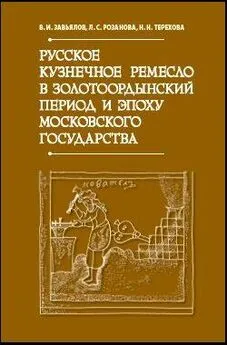


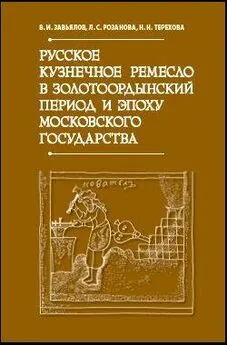
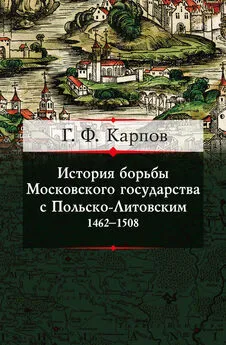
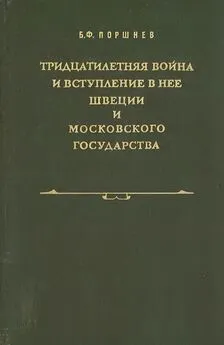
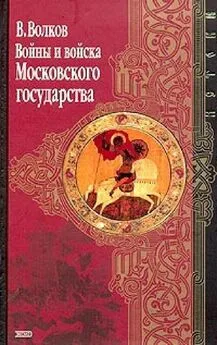
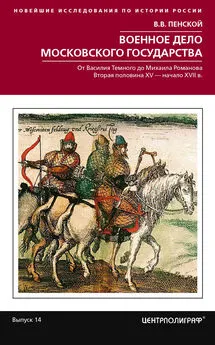
![Иван Божерянов - Великая разруха Московского государства, 1598–1612 гг. [с иллюстрациями]](/books/1102372/ivan-bozheryanov-velikaya-razruha-moskovskogo-gosudar.webp)

